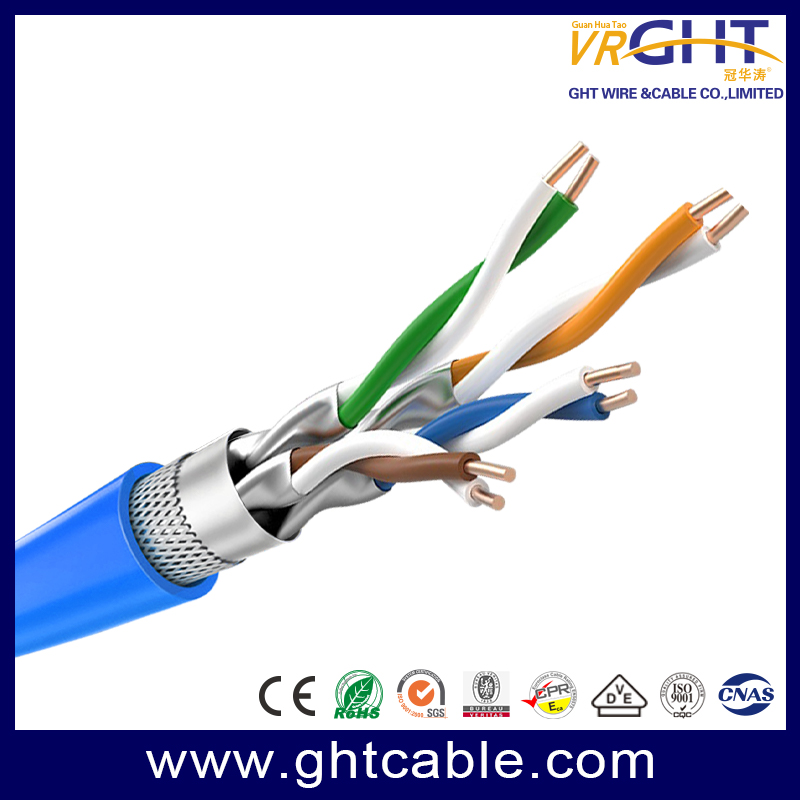
Cat6 vs Cat6a vs Cat7: Which Ethernet Cable Should You Install in 2025?
In 2025, choosing the right Ethernet cable is more important than ever. With faster internet plans, data-heavy applications, and the rise of smart homes and offices, your network infrastructure must deliver both speed and reliability. Ethernet cables are the foundation of every wired network, and the choice between Cat6, Cat6a, and Cat7 can determine how efficiently your system performs.
If you are upgrading your network or planning a new installation, this article will help you understand the real differences between these three popular cable categories — and guide you to choose the one that best fits your needs.
Understanding Ethernet Cable Categories
Ethernet cables are classified by ''Category'' or ''Cat,'' followed by a number that defines their performance standards. Each step up — from Cat6 to Cat6a to Cat7 — represents improvements in bandwidth, speed, and shielding. The higher the category, the better the data transmission and protection from interference.
However, that doesn't mean higher categories are always necessary. The right choice depends on your environment, equipment, and future plans.
Cat6 Cable: The Reliable Workhorse
Cat6 (Category 6) cables have become the most widely used type in homes and offices. They provide a balance of affordability and performance, supporting speeds of up to 1 Gbps over 100 meters and up to 10 Gbps for shorter runs (up to 55 meters).
With a bandwidth capacity of 250 MHz, Cat6 cables can easily handle HD streaming, online gaming, and most business applications. They are available in both unshielded (UTP) and shielded (STP) versions, making them adaptable to different installation needs.
Cat6 is also easy to install and backward compatible with older Cat5 and Cat5e systems. For everyday use, it's a dependable solution that doesn't require a large investment.
If you're looking for high-quality Cat6 cables, VRGHT offers durable and stable options built with pure copper conductors and precise insulation to ensure smooth data flow and minimal signal loss. Our Cat6 cables are ideal for small offices, home networks, and commercial applications that require consistent performance without overpaying for higher-end cables.
Cat6a Cable: The Smart Upgrade for the Future
Cat6a (Augmented Category 6) takes everything good about Cat6 and enhances it. With twice the bandwidth (up to 500 MHz) and better shielding, Cat6a supports 10 Gbps Ethernet speeds over a full 100-meter distance. This makes it perfect for modern enterprises, smart buildings, and high-performance home networks.
Cat6a cables are thicker and include foil shielding that reduces crosstalk and electromagnetic interference, ensuring stable signal quality even in environments with multiple cables running close together. They are also more robust, offering long-term durability and performance.
The main downside is flexibility — Cat6a cables are slightly harder to bend and install, especially in tight spaces. However, the performance gain is worth it for users seeking to future-proof their networks.
At VRGHT, our Cat6a Ethernet cables are engineered to meet and exceed international performance standards. Designed with advanced shielding and high-grade materials, they provide stable 10 Gbps connections for data centers, schools, and corporate offices. For projects requiring both speed and longevity, VRGHT Cat6a cables deliver excellent value.
Cat7 Cable: The High-End Choice for Ultimate Performance
Cat7 (Category 7) cables represent the next generation of Ethernet cabling technology. Designed for demanding, high-speed environments, Cat7 supports frequencies up to 600–1000 MHz and can handle 10 Gbps speeds across 100 meters, with potential to reach up to 40 Gbps over shorter distances.
Unlike Cat6 or Cat6a, Cat7 cables are fully shielded, meaning each twisted pair is individually wrapped in foil, and an overall braid shield provides additional protection. This design drastically reduces electromagnetic interference and crosstalk, making Cat7 ideal for data centers, industrial facilities, and smart infrastructure.
Cat7 cables often use GG45 or TERA connectors, though many are backward compatible with RJ45 ports. While they are more expensive and less flexible, the level of stability and noise immunity they provide is unmatched.
If you require the best possible signal quality, VRGHT Cat7 cables are your ultimate solution. Built to handle extreme data demands and interference-prone environments, they offer unmatched performance for server rooms, broadcasting systems, and high-speed network backbones.
Comparing Cat6, Cat6a, and Cat7 Performance
When comparing Cat6, Cat6a, and Cat7, it's clear that each serves a different level of performance and budget:
- Cat6 is best for cost-conscious users who need reliable gigabit connectivity. It's easy to install, versatile, and supports most home or office applications.
- Cat6a is the preferred option for those looking to balance performance and cost. It supports true 10 Gbps speeds over long distances and resists interference, making it suitable for modern office setups and high-speed internet connections.
- Cat7 is the premium choice, providing exceptional bandwidth and shielding for mission-critical environments where performance cannot be compromised.
In short, Cat6a remains the most practical and future-ready option for 2025 installations. It delivers enough bandwidth to handle next-generation applications — from 8K streaming to AI-driven data systems — without the complexity or expense of Cat7.
Choosing the Right Ethernet Cable in 2025
When deciding which Ethernet cable to install, consider these key factors:
- Network Speed Requirements – If you only need standard internet or office speeds (1 Gbps), Cat6 is enough. For guaranteed 10 Gbps over 100 meters, Cat6a is the best choice.
- Installation Environment – In high-interference areas, use shielded Cat6a or Cat7 cables. For open office or residential settings, Cat6 UTP is adequate.
- Future Expansion – If you're upgrading or planning for long-term use, investing in Cat6a or Cat7 ensures your system won't become outdated in just a few years.
- Budget – Cat6 offers affordability, Cat6a balances performance with cost, and Cat7 delivers the highest quality at a premium price.
Why Choose VRGHT for Ethernet and Power Cables
At VRGHT, we provide a comprehensive range of high-performance network cables, including Cat5e, Cat6, Cat6a, Cat7, and fiber optic cables, all designed to meet modern networking standards. Our products are built with precision-engineered conductors, strict quality control, and global certifications.
Whether you're setting up a smart home, upgrading a corporate network, or building a data center, VRGHT cables guarantee reliable data transmission, excellent shielding, and long-lasting durability. We also supply power cables, communication cables, and custom cable assemblies, allowing you to source everything from a single trusted supplier.
By choosing VRGHT, you ensure your network is not only fast but also future-ready — supporting your business or home for years to come.
Conclusion
In the world of networking, speed and stability define performance. The choice between Cat6, Cat6a, and Cat7 depends on how much bandwidth you need, how long you plan to use your infrastructure, and how much interference your environment presents.
For most 2025 installations, Cat6a cables provide the best balance of performance, flexibility, and cost-efficiency. But if you're designing a high-speed backbone or data center, Cat7 remains the top-tier solution.
Whatever your needs, VRGHT offers high-quality Ethernet cables that deliver dependable connectivity — powering networks that keep you connected in the digital age.










Leave a comment